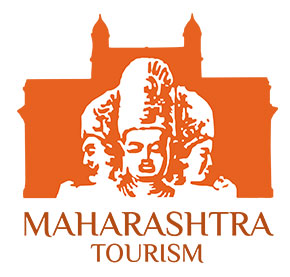
Articles
Supported by

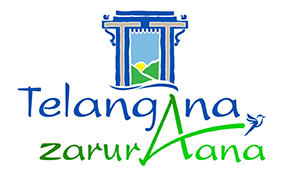




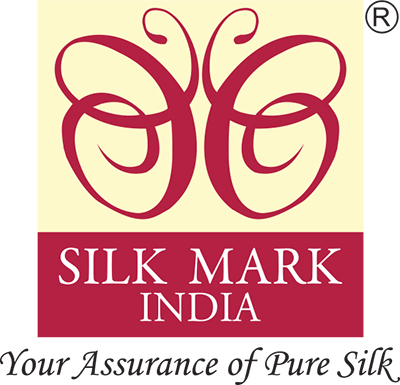



Award Category
Historical Tourism Award / Heritage Tourism Award
(For the best state promoting heritage tourism. Categories: Best Site, Best City, Best State.)
Who can apply: Central and State government bodies, NGOs
Riverside Heritage Tourism Award
Riverside properties preserving culture and heritage
Who can apply: Central and State government bodies, NGOs
Best Tourist Circuit / Best Tourist Trail
Award for states with the best sites for pilgrimages
Pilgrimage and Spiritual Tourism Award
(Recognises important pilgrimage tourism circuits)
Who can apply: State governments / NGOs
Traditional Skills Award / Crafts and Creativity Award
(For exponents of traditional art forms who train others, and for individuals skilled in handicrafts, weaving, etc.)
Who can apply: State governments, institutions such as Lalit Kala Akademi, groups of artists, NGOs, State handicrafts bodies, groups of artisans, NGOs promoting cultural crafts
Best Cultural Music & Dance Award
(For musicians and dancers who train others in traditional music or dance forms)
Who can apply: State governments, institutions such as Sangeet Natak Akademi, groups of artists, NGOs
Best Travel Operator
Who can apply: Travel operators, institutions
Best Advertising Agency
(Award for ad campaigns, ad films on tourism, etc.)
Who can apply: Advertising agencies
Best Creative
(Award for ad campaigns, ad films on tourism, etc.)
Who can apply: Advertising agencies
NOTE: In case, insufficient nominations are received in a particular category, jury's wisdom will prevail.
State tourism boards
State government tourism bodies
Travel associations
Professionals from the heritage sectors
Travel writers & bloggers
Travel agents
Jury Members
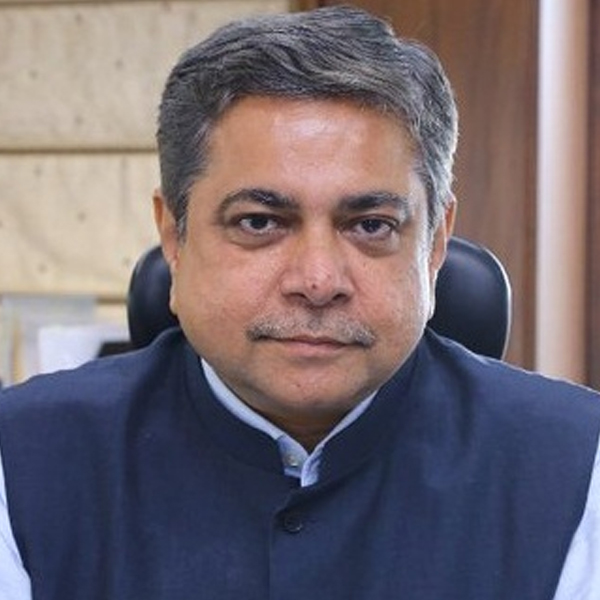


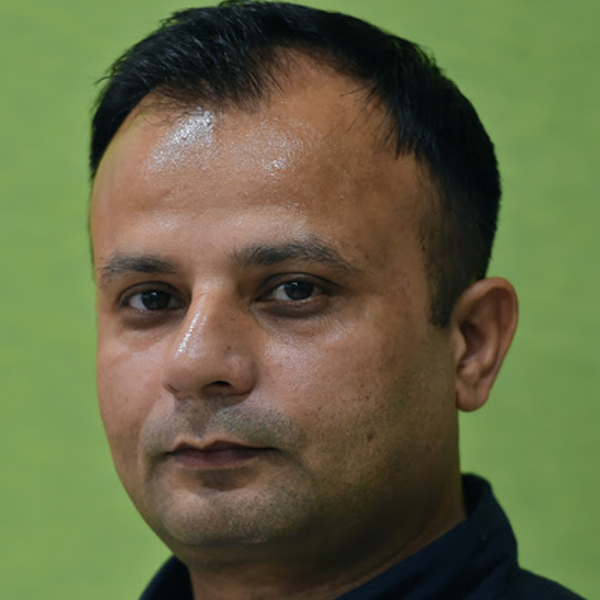
UNESCO World Heritage Sites
Situated at the foothills of the Patkai Ranges in eastern Assam, Moidams are royal necropolises of the Tai-Ahom dynasty. These mound-burial structures hold profound cultural and spiritual significance for the Tai-Ahom community.
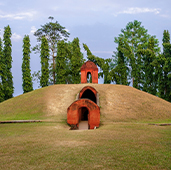
The Hoysala temples, including the Chennakesava, Hoysaleswara, and Keshava temples, are known for their detailed carvings, star-shaped layouts, and detailed sculptures, showcasing a distinct form of Dravidian temple architecture.
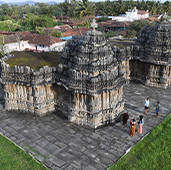
Founded by Rabindranath Tagore, Santiniketan later became Visva-Bharati University. It emphasises cultural interchange, art, and education, blending Indian traditions with global influences in architecture and philosophy.
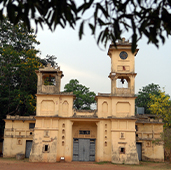
Discovered in 1968, Dholavira is one of the largest cities of the Indus Valley Civilisation. Known for its advanced water management systems, security features, and extensive use of stone in construction, it is a remarkable testament to Harappan ingenuity.
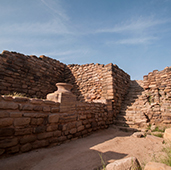
Built during the Kakatiya period by rulers Rudradeva and Recharla Rudra, the Ramappa Temple is notable for its intricate cravings and lightweight floating bricks used in its pyramidal vimana. The sandstone temple is a masterpiece of medieval architecture.

Founded in 1727 by Sawai Jai Singh II, Jaipur stands out as a planned city designed using a grid layout inspired by Vedic architecture. Originally established as a commercial hub, Jaipur has preserved its artisanal and trade traditions over centuries.
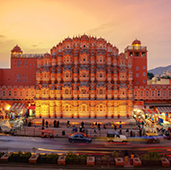
This architectural ensemble, which includes icons like the Chhatrapati Shivaji Maharaj Terminus and Marine Drive, combines 19th-century Victorian Gothic architecture and 20th-century Art Deco styles, reflecting Mumbai's colonial and modern heritage.
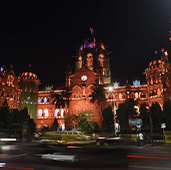
Founded in the 15th century by Sultan Ahmad Shah, the walled city of Ahmedabad, on the eastern bank of the Sabarmati River, showcases a rich architectural heritage from the sultanate era.

Situated about 88km from Patna, the Nalanda Mahavihara was founded in the 5th century CE by Kumargupta I of the Gupta dynasty. This site served as a significant centre of learning and is one of India’s most important archaeological landmarks.
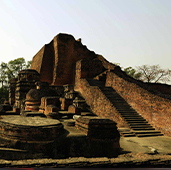
Le Corbusier's urban planning for Chandigarh, including the Capitol Complex, represents modernist design that combines functionality and and aesthetics in post-independent India.

Built in the 11th century by Rani Udaymati, the intricately carved stepwell on the banks of the Saraswati River is a stunning example of Maru-Gurjara architecture. It serves as both a water reservoir and an underground shrine.
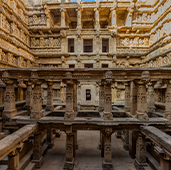
Located in Rajasthan, this UNESCO site comprises six grand forts in Chittorgarh, Kumbhalgarh, Sawai Madhopur, Jhalawar, Jaipur, and Jaisalmer. These forts encompass urban centres, temples, and trading hubs, reflecting a rich courtly culture of learning, music, and art.
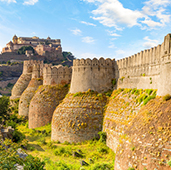
Built by Maharaja Jai Singh II in 1734, this astronomical observatory features massive stone equipment for celestial observations, demonstrating India's advanced scientific tradition.
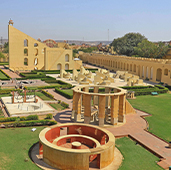
A historic network of narrow-gauge trains built under British rule, these engineering marvels traverse rugged mountain terrain, giving out spectacular views while preserving the legacy of colonial-era railways.
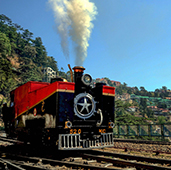
This magnificent fort, built by Muglal emperor Shah Jahan in 1648 is a symbol of Mughal architectural brilliance. Iconic structures inside the complex include Diwan-i-Aam, Diwan-i-Khas, and the Moti Masjid.

Founded by Sultan Mahmud Begda, this site features monuments on Pavagadh Hill, rising 800 meters above the surrounding plain. Its attractions include palaces, mosques, temples, gateways, wells, and reservoirs, offering a unique blend of natural and historical significance.
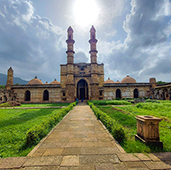
Designed by British architect F.W. Stevens, this iconic structure was completed in 1888 after ten years of construction. With its stained-glass windows, domed arches, and intricately carved pillars, it reflects a blend of Victorian Gothic and Indian palace architecture.
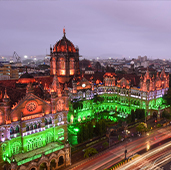
Built by the Chola dynasty between the 10th and 12th centuries, the Brihadeeswarar Temple (Thanjavur), Gangaikondacholeswaram Temple (Gangaikondacholapuram), and Airavatesvara Temple (Darasuram) stand as monumental testaments to Chola architectural and artistic brilliance.
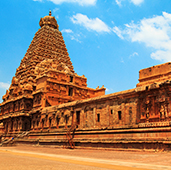
This archeological site contains prehistoric rock paintings from the Paleolithic period and the Mesolithic period. The shelters provide insights into early human settlements and artistic expression in India.
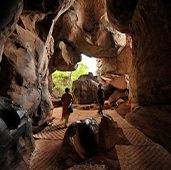
The Mahabodhi Temple Complex is one of the four sacred sites associated with the life of Lord Buddha. It marks the location of his enlightenment and is revered as a pilgrimage destination by Buddhists worldwide.
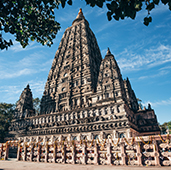
Built in 1570, Humayun’s Tomb was the first garden-tomb in the Indian subcontinent and served as a precursor to Taj Mahal. A collaboration between Persian and Indian craftsmen, it influenced subsequent Mughal architectural innovations.
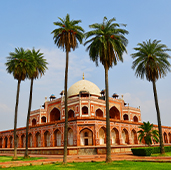
The Qutb Minar, a 73-metre-high red sandstone tower, is a masterpiece of Indo-Islamic architecture. Surrounding landmarks such as the Quwwat-ul-Islam Mosque and the Iron Pillar, showcase Delhi's rich historical and cultural heritage.
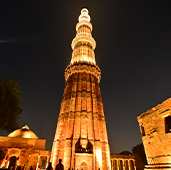
The village of Sanchi is famous for its ancient Buddhist monuments, which date from the 3rd century BCE to the 12th century CE. The Great Stupa, built by Emperor Ashoka, stands on a 300-foot-high hill on the banks of the Betwa River.
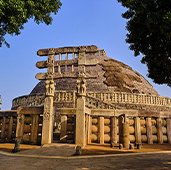
Located on an island in the Arabian Sea near Mumbai, the Elephanta Caves house magnificent sculptures, including the Ardhanarishvara statue and depictions of Shiva’s life. Most sculptures date back to the Silhara dynasty (9th to 13th centuries).

Pattadakal (Pattadakallu), also known as Raktapura, is a 7th-8th century CE complex in Northern Karnataka. Described by UNESCO as a fusion of northern and southern Indian architecture, it represents the pinnacle of eclectic art.
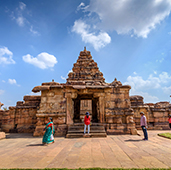
These churches and convents, remnants of Portuguese colonial rule, showcase Portuguese architectural styles and Christian heritage in India. They were inscribed as a UNESCO World Heritage Site in 1986.
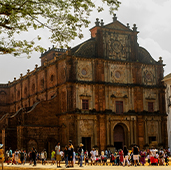
Hampi, also known as the Hampi Group of Monuments, was once the grand capital of the Vijayanagar Empire. Nestled along the Tungabhadra River amid rocky hills, Hampi’s ruins reflect its historical and architectural legacy.
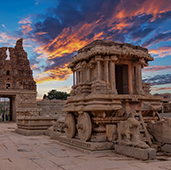
Fatehpur Sikri, built by Mughal Emperor Akbar, symbolises the architectural and cultural grandeur of the Mughal Empire. Its intricately carved walls and ornate decorations exemplify artistic brilliance.

Constructed during the 10th and 11th centuries by the Chandella dynasty, the temples at Khujuraho represents the zenith of northern Indian temple architecture. The towering central spire, flanked by smaller spires, epitomises architectural brilliance.
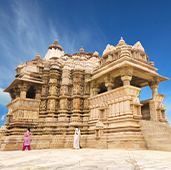
Formerly a thriving Pallava port city, Mahabalipuram features monuments such as rock-cut cave temples, monolithic shrines, bas-relief sculptures, and structural temples, along with excavated temple remains. The Shore Temple, adorned with thousands of sculptures, stands as a tribute to Lord Shiva.
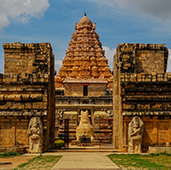
Built in the 13th century by King Narasimhadeva I, this chariot-shaped temple is devoted to the Sun God Surya. Its exquisite carvings depict celestial and mythological themes, making it a masterpiece of Kalinga architecture.
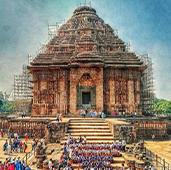
This white marble monument, commissioned by Emperor Shah Jahan in memory of his wife Mumtaz Mahal, is a Mughal architectural masterpiece that symbolises eternal love incorporating Persian, Indian, and Islamic influences.
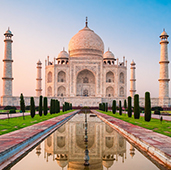
The Ajanta Caves are renowned for their breathtaking Buddhist sculptures and murals, portraying the life of Buddha and showcasing India’s ancient artistic brilliance. These 30 cave paintings were carved into rock between the 2nd century BCE and the 6th century CE.
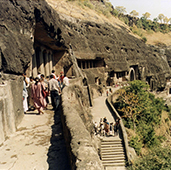
The Ellora Caves, a UNESCO World Heritage Site, comprise 34 caves built between the 4th and 9th centuries CE. These caves reflect religious harmony, with 12 Buddhist, 17 Hindu, and 5 Jain structures featuring intricate carvings and towering sculptures.

Articles
For Sponsorship & Nominations
Atul Arora (Delhi): 98999 44554
Rajesh B. Solanki (Mumbai): 98216 20784
John Sudhir Abraham (Chennai): 95000 74437
Praveen Gopinathan (Bengaluru): 72590 14885
Abraham T. George (Hyderabad): 98493 90462
Sushmita B. Mitra (Kolkata): 98302 01011
Krishnakumar R. (Thiruvananthapuram): 98957 57910